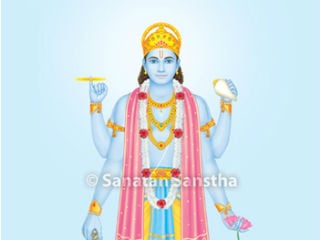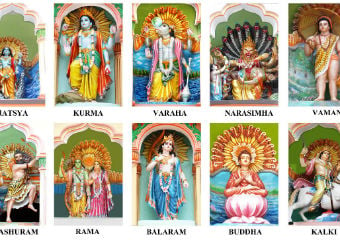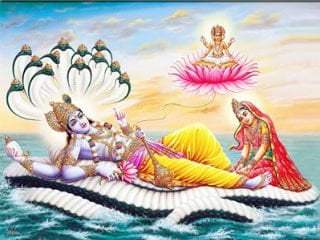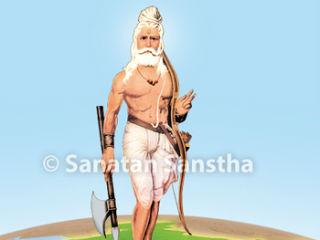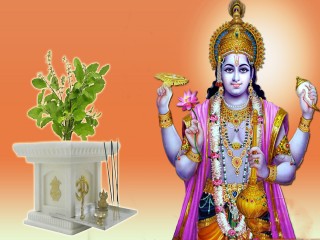The ten Incarnations of Shri Vishnu
This article gives information on ten incarnations of Shri Vishnu.
Mission and Special Characteristics of Shri Vishnu
God created the universe through the five Deities (Principles)- Prajapati, Brahma, Shiva, Shri Vishnu and Meenakshi. These five Deities have all the characteristics of God besides their own. Sheshashayi, Anantashayani form of Shri Vishnu that theVaishnavsect worship, meaning, the nirgun (Unmanifest) form of Shri Vishnu is a representation of Supreme God or Mahavishnu.To them, Shri … Read more
Vaikunth chaturdashi is an invaluable opportunity granted to us to worship Deity Shri Vishnu
‘Vaikunthchaturdashi is an invaluable opportunity granted to us to worship Shri.Vishnu. Its significance is that on this day the doors of Vaikunth (The abode of Shri Vishnu) are open to all devotees!
Why a specific Name of Shri Vishnu is used for a specific task ?
Vishṇusahasranam is a famous stotra (A hymn of praise) of Shri Vishṇu. Amidst recitation of these thousand Names, Shri Vishṇu is ritualistically worshipped with an offering of tulsi (Holy basil) leaves or lotus flowers.
Narayan – The Principle from which the world was created
Narayan is a Deity from the post-Rugveda period. The word Narayaṇ is derived from ‘nar’ which means Apa (Absolute Water) and ‘ayan’ which means location.
Parashuram – confluence of Kshatratej and Brahmatej
Parashuram is 6th incarnation of Shri Vishnu. Sage Jamadagni (of the Bhrugu dynasty) and Reṇuka were the parents of Parashuram. Reṇuka was the daughter of a Kshatriya (Warrior).
Why is Shri Vishnu called as foremost Guru ?
God created the universe through the five Deities (Principles)- Prajapati, Brahma, Shiva, Shri Vishnu and Meenakshi. These five Deities have all the characteristics of God besides their own.
Why are tulsi leaves offered to Shri Vishnu ?
Tulsi is a sacred plant. The plant grows to a height of 3-4 feet. There are two varieties of tulsi – black (Shrikrushṇa)and white. This plant has vertical springs which bear racemes.

